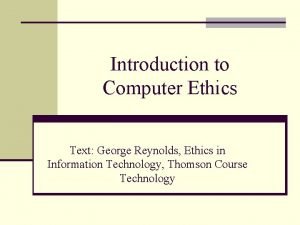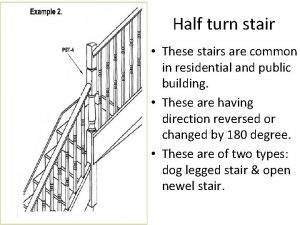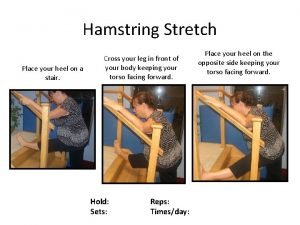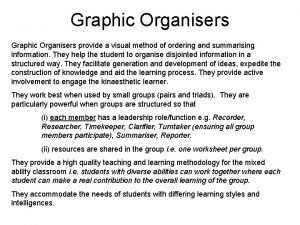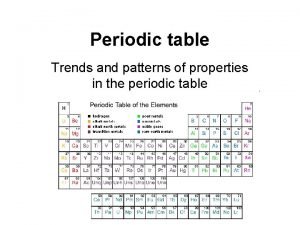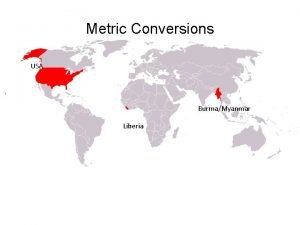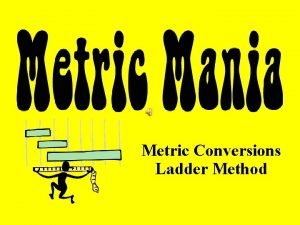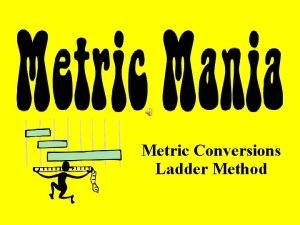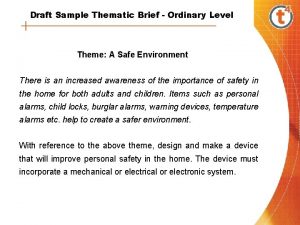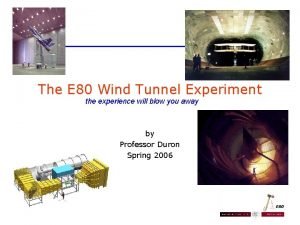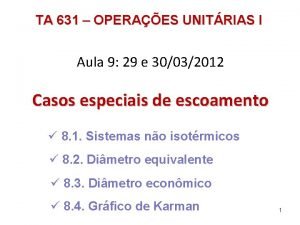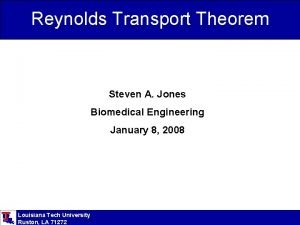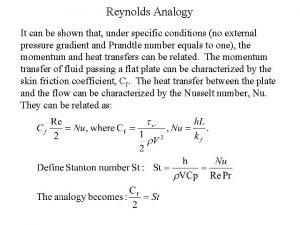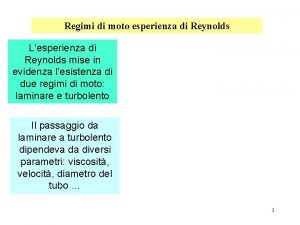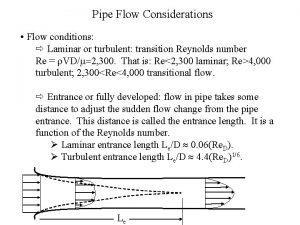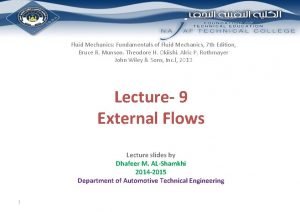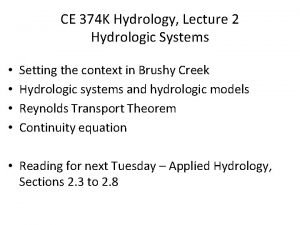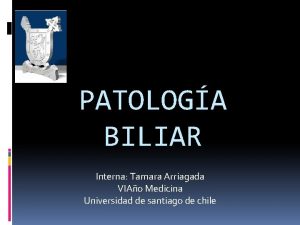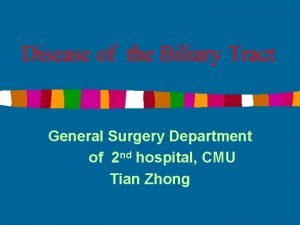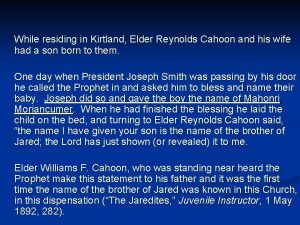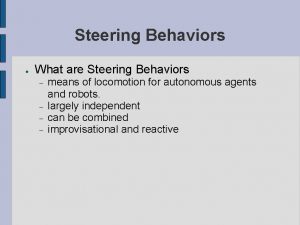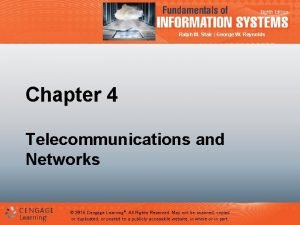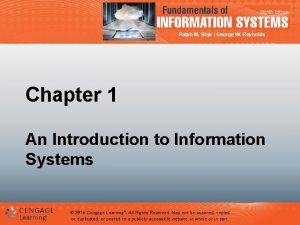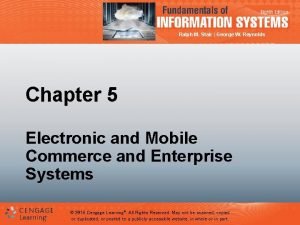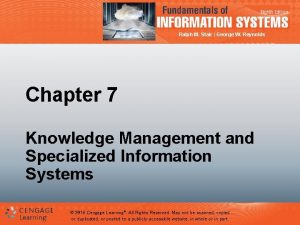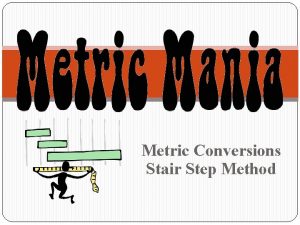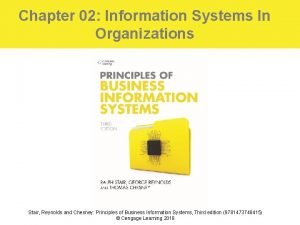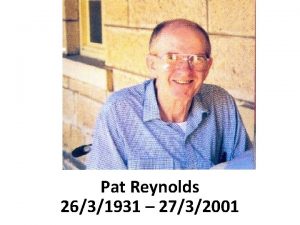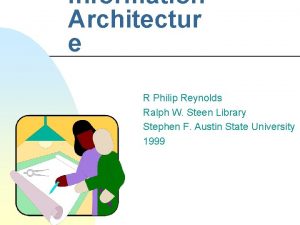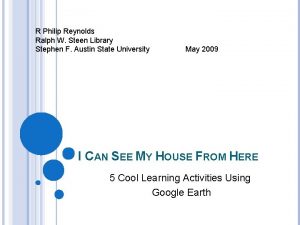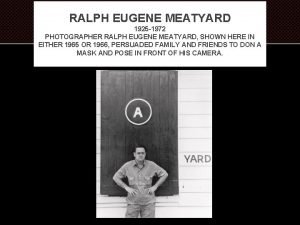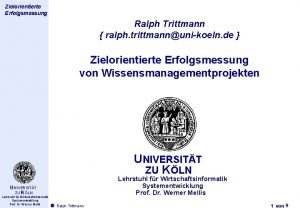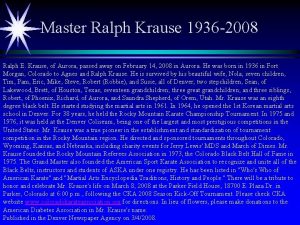Ralph M Stair George W Reynolds Chapter 6











































































- Slides: 75

Ralph M. Stair | George W. Reynolds Chapter 6 Telecommunications and Networks © 2016 Cengage Learning®. All Rights Reserved. May not be scanned, copied or duplicated, or posted to a publicly accessible website, in whole or in part.

Principles and Learning Objectives: Telecommunications System • A telecommunications system consists of several fundamental components – Identify and describe the fundamental components of a telecommunications system – Discuss two broad categories of telecommunications media and their associated characteristics – Briefly describe several options for shortrange, medium-range, and long-range communications © 2016 Cengage Learning®. All Rights Reserved. May not be scanned, copied or duplicated, or posted to a publicly accessible website, in whole or in part. 2

Principles and Learning Objectives: Networks • Networks are an essential component of an organization’s information technology infrastructure – Identify the benefits of using a network – Describe three distributed processing alternatives and discuss their basic features – Identify several telecommunications hardware devices and discuss their functions © 2016 Cengage Learning®. All Rights Reserved. May not be scanned, copied or duplicated, or posted to a publicly accessible website, in whole or in part. 3

Principles and Learning Objectives: Network Applications • Network applications are essential to organizational success – List and describe several network applications that organizations benefit from today © 2016 Cengage Learning®. All Rights Reserved. May not be scanned, copied or duplicated, or posted to a publicly accessible website, in whole or in part. 4

Why Learn About Telecommunications and Networks? • Effective communication is essential to the success of every major human undertaking • To be a successful member of any organization, you must be able to take advantage of the capabilities that communications technologies offer you © 2016 Cengage Learning®. All Rights Reserved. May not be scanned, copied or duplicated, or posted to a publicly accessible website, in whole or in part. 5

An Overview of Telecommunications • Telecommunications is the electronic transmission of signals for communications • Telecommunications medium: any material substance that carries an electronic signal to support communications between a sending and receiving device © 2016 Cengage Learning®. All Rights Reserved. May not be scanned, copied or duplicated, or posted to a publicly accessible website, in whole or in part. 6

An Overview of Telecommunications (cont’d. ) • Networking protocol: a set of rules, algorithms, messages, and other mechanisms that enable software and hardware in networked devices to communicate effectively © 2016 Cengage Learning®. All Rights Reserved. May not be scanned, copied or duplicated, or posted to a publicly accessible website, in whole or in part. 7

Elements of a Telecommunications System © 2016 Cengage Learning®. All Rights Reserved. May not be scanned, copied or duplicated, or posted to a publicly accessible website, in whole or in part. 8

An Overview of Telecommunications: Synchronous vs. Asynchronous • Synchronous communications – Receiver gets message instantaneously • Asynchronous communications – Receiver gets message after some delay © 2016 Cengage Learning®. All Rights Reserved. May not be scanned, copied or duplicated, or posted to a publicly accessible website, in whole or in part. 9

Basic Telecommunications Channel Characteristics • A simplex channel transmits data in only one direction • A half-duplex channel transmits data in either direction but not simultaneously • A full-duplex channel permits data transmission in both directions at the same time © 2016 Cengage Learning®. All Rights Reserved. May not be scanned, copied or duplicated, or posted to a publicly accessible website, in whole or in part. 10

Channel Bandwidth • Channel bandwidth: the rate at which data is exchanged, measured in bits/sec • Broadband communications: a relative term; a telecommunications system that can transmit data very quickly © 2016 Cengage Learning®. All Rights Reserved. May not be scanned, copied or duplicated, or posted to a publicly accessible website, in whole or in part. 11

Circuit Switching and Packet Switching • A circuit-switching network sets up a circuit between the sender and receiver before any communications can occur • A packet switching network has no fixed path is created between the communicating devices – Data is broken into packets for sending © 2016 Cengage Learning®. All Rights Reserved. May not be scanned, copied or duplicated, or posted to a publicly accessible website, in whole or in part. 12

Telecommunications Media • Two broad categories – Wired (guided) transmission media: signals are guided along a solid medium – Wireless: the signal is broadcast over airwaves as a form of electromagnetic radiation © 2016 Cengage Learning®. All Rights Reserved. May not be scanned, copied or duplicated, or posted to a publicly accessible website, in whole or in part. 13

Table 6. 1 Guided Transmission Media Types Media Type Description Advantages Disadvantages Twisted-pair wire Twisted pairs of copper wire, shielded or unshielded Used for telephone service; widely available Transmission speed and distance limitations Coaxial cable Inner conductor wire surrounded by insulation Cleaner and faster data trans- mission than twisted-pair wire More expensive than twisted-pair wire Diameter of cable is much smaller than coaxial cable; less distortion of signal; capable of high transmission rates Expensive to purchase and install Fiber-optic cable Many extremely thin strands of glass bound together in a sheathing; uses light beams to transmit signals © 2016 Cengage Learning®. All Rights Reserved. May not be scanned, copied or duplicated, or posted to a publicly accessible website, in whole or in part. 14

Wireless Communications Options • Wireless transmission involves the broadcast of communications in one of three frequency ranges – Radio, microwave, or infrared frequencies • In some cases, use of wireless communications is regulated – The signal must be broadcast within a specific frequency range to avoid interference with other wireless transmissions © 2016 Cengage Learning®. All Rights Reserved. May not be scanned, copied or duplicated, or posted to a publicly accessible website, in whole or in part. 15

Table 6. 2 Frequency Ranges Used for Wireless Communications Technology Description Advantages Disadvantages Radio frequency range Operates in the 3 k. Hz– 300 MHz range Supports mobile users; costs are dropping Signal highly susceptible to interception Microwave— terrestrial and satellite frequency range High-frequency radio signal (300 MHz– 300 GHz) sent through atmosphere and space (often involves communications satellites) Signals in the 300 GHz– 400 THz frequency range sent through air as light waves Avoids cost and effort to lay cable or wires; capable of high-speed transmission Must have unobstructed line of sight between sender and receiver; signal highly susceptible to interception Infrared frequency range Allows you to move, remove, and install devices without expensive wiring Must have unobstructed line of sight between sender and receiver; transmission effective only for short distances © 2016 Cengage Learning®. All Rights Reserved. May not be scanned, copied 16 or duplicated, or posted to a publicly accessible website, in whole or in part.

Short Range Wireless Options: Near Field Communication and Bluetooth • Near field communication (NFC): a very short-range wireless connectivity technology – Designed for consumer electronics, cell phones, and credit cards • Bluetooth: a wireless communications specification that describes how cell phones, computers, personal digital assistants, etc. , can be interconnected © 2016 Cengage Learning®. All Rights Reserved. May not be scanned, copied or duplicated, or posted to a publicly accessible website, in whole or in part. 17

Short Range Wireless Options: Ultra Wideband Infrared • Ultra wideband (UWB): a short-range communications that employs extremely short electromagnetic pulses lasting 50 to 1, 000 picoseconds – Transmission range: 10 to 50 meters • Infrared transmission: – Sends signals at a frequency of 300 GHz and above – Requires line of sight and short distances © 2016 Cengage Learning®. All Rights Reserved. May not be scanned, copied or duplicated, or posted to a publicly accessible website, in whole or in part. 18

Short Range Wireless Options: Zig. Bee • Zig. Bee: a developing network wireless communications standard – Carries small amounts of data – Uses fairly low bandwidth of 20 Kbps to 250 Kbps – Has midrange distances (100 meters) – Requires very little power • Zig. Bee is used in security systems © 2016 Cengage Learning®. All Rights Reserved. May not be scanned, copied or duplicated, or posted to a publicly accessible website, in whole or in part. 19

Medium-Range Wireless Options: Wi-Fi • A wireless telecommunications technology brand owned by the Wi-Fi Alliance • Employs a wireless access point (a transmitter with an antenna) that receives the signal and decodes it • Maximum range of Wi-Fi access points – 300 -900 feet outdoors – 100 -300 feet within a dry-walled building © 2016 Cengage Learning®. All Rights Reserved. May not be scanned, copied or duplicated, or posted to a publicly accessible website, in whole or in part. 20

Wi-Fi Network © 2016 Cengage Learning®. All Rights Reserved. May not be scanned, copied or duplicated, or posted to a publicly accessible website, in whole or in part. 21

Wide Area Wireless Network Types • Wide area network options include: – Satellite and terrestrial microwave transmission – 4 G – 5 G – Wi. MAX © 2016 Cengage Learning®. All Rights Reserved. May not be scanned, copied or duplicated, or posted to a publicly accessible website, in whole or in part. 22

Wide Area Wireless Network Types: Microwave Transmission • Microwave is a high-frequency (300 MHz– 300 GHz) signal sent through the air • Common forms of satellite communications: – Geostationary satellite – Low earth orbit (LEO) satellite – Very small aperture terminal (VSAT) © 2016 Cengage Learning®. All Rights Reserved. May not be scanned, copied or duplicated, or posted to a publicly accessible website, in whole or in part. 23

Microwave Communications © 2016 Cengage Learning®. All Rights Reserved. May not be scanned, copied or duplicated, or posted to a publicly accessible website, in whole or in part. 24

Satellite Transmission © 2016 Cengage Learning®. All Rights Reserved. May not be scanned, copied or duplicated, or posted to a publicly accessible website, in whole or in part. 25

Wide Area Wireless Network Options: 4 G and 5 G Wireless Communications • Historical perspective – 1 G (first generation) of wireless communications standards: originated in the 1980 s; based on analog communications – 2 G (second generation) employed fully digital networks; superseded 1 G networks in the early 1990 s – 3 G supports wireless voice and broadband speed data communications in a mobile environment at speeds of 2 to 4 Mbps © 2016 Cengage Learning®. All Rights Reserved. May not be scanned, copied or duplicated, or posted to a publicly accessible website, in whole or in part. 26

Wide Area Wireless Network Options: 4 G Wireless Communications • 4 G wireless provides increased data transmission rates – 3 to 20 times the speed of 3 G networks for mobile devices • 4 G networks are based on Long Term Evolution (LTE) • LTE is a standard for wireless communications for mobile phones based on packet switching © 2016 Cengage Learning®. All Rights Reserved. May not be scanned, copied or duplicated, or posted to a publicly accessible website, in whole or in part. 27

Wide Area Wireless Network Options: Wi. MAX • Worldwide Interoperability for Microwave Access (Wi. MAX) – A 4 G alternative – Based on a set of IEEE 802. 16 wireless metropolitan area network standards © 2016 Cengage Learning®. All Rights Reserved. May not be scanned, copied or duplicated, or posted to a publicly accessible website, in whole or in part. 28

Wide Area Wireless Network Options: 5 G Wireless Communications • The next major phase of mobile telecommunications standards beyond 4 G • Anticipated in the early 2020 s • Expected characteristics – Higher data transmission rates – Lower power consumption – Higher connect reliability and more coverage – Lower infrastructure costs © 2016 Cengage Learning®. All Rights Reserved. May not be scanned, copied or duplicated, or posted to a publicly accessible website, in whole or in part. 29

Growth in Wireless Data Traffic • The volume of mobile data traffic reached 8: 1 exabytes worldwide in 2012 • Some predict a compound average growth rate of roughly 44 percent over the next five years • Cisco estimates that worldwide wireless data traffic will grow at a higher average rate of 66 percent per year from 2013 to 2017 © 2016 Cengage Learning®. All Rights Reserved. May not be scanned, copied or duplicated, or posted to a publicly accessible website, in whole or in part. 30

Networks and Distributed Processing • Computer network: the communications media, devices, and software needed to connect two or more computer systems or devices • Network nodes: the computers and devices on the networks • Organizations can use networks to share hardware, programs, and databases © 2016 Cengage Learning®. All Rights Reserved. May not be scanned, copied or duplicated, or posted to a publicly accessible website, in whole or in part. 31

Network Topology • A diagram that indicates how the communications links and hardware devices of the network are arranged • Three most common network topologies – Star network – Bus network – Mesh network © 2016 Cengage Learning®. All Rights Reserved. May not be scanned, copied or duplicated, or posted to a publicly accessible website, in whole or in part. 32

Network Types • A personal area network (PAN) supports the interconnection of information technology close to one person • A local area network (LAN) connects computer systems and devices within a small area (e. g. , an office or a home) • A metropolitan area network (MAN) connects users and their devices in an area that spans a campus or city © 2016 Cengage Learning®. All Rights Reserved. May not be scanned, copied or duplicated, or posted to a publicly accessible website, in whole or in part. 33

Typical LAN © 2016 Cengage Learning®. All Rights Reserved. May not be scanned, copied or duplicated, or posted to a publicly accessible website, in whole or in part. 34

Network Types: WANs • A wide area network (WAN) connects large geographic regions • WANs consist of: – Computer equipment owned by the user – Data communications equipment and telecommunications links provided by various carriers and service providers • Communications may involve transborder data flow © 2016 Cengage Learning®. All Rights Reserved. May not be scanned, copied or duplicated, or posted to a publicly accessible website, in whole or in part. 35

Wide Area Network © 2016 Cengage Learning®. All Rights Reserved. May not be scanned, copied or duplicated, or posted to a publicly accessible website, in whole or in part. 36

Basic Processing Alternatives • Centralized processing occurs in a single location or facility • Decentralized processing involves devices placed at various remote locations; the devices do not communicate with one another • Distributed processing uses devices placed at remote locations; devices are connected to each other via a network © 2016 Cengage Learning®. All Rights Reserved. May not be scanned, copied or duplicated, or posted to a publicly accessible website, in whole or in part. 37

Basic Processing Alternatives: File Server Systems • Authorized users share data through file server computing © 2016 Cengage Learning®. All Rights Reserved. May not be scanned, copied or duplicated, or posted to a publicly accessible website, in whole or in part. 38

Client/Server Systems • Client/server architecture features multiple computer platforms dedicated to special functions, e. g. , database management, printing, or communications • A client is any computer that sends messages requesting services from the servers on the network • A database server sends only the data that meets a specific query—not the entire file © 2016 Cengage Learning®. All Rights Reserved. May not be scanned, copied or duplicated, or posted to a publicly accessible website, in whole or in part. 39

Client/Server Connection © 2016 Cengage Learning®. All Rights Reserved. May not be scanned, copied or duplicated, or posted to a publicly accessible website, in whole or in part. 40

Telecommunications Hardware • Modem: a device that converts (modulates and demodulates) communications signals so they can be transmitted over the communication media © 2016 Cengage Learning®. All Rights Reserved. May not be scanned, copied or duplicated, or posted to a publicly accessible website, in whole or in part. 41

How a Modem Works © 2016 Cengage Learning®. All Rights Reserved. May not be scanned, copied or duplicated, or posted to a publicly accessible website, in whole or in part. 42

Telecommunications Hardware: Routers, Switches, and Other Devices • Router: a telecommunications device that forwards data packets between computer networks • Switch: a device containing ports to which all the devices on the network can connect – Uses the physical device address in each incoming message to determine to which output port it should forward the message to reach its intended destination © 2016 Cengage Learning®. All Rights Reserved. May not be scanned, copied or duplicated, or posted to a publicly accessible website, in whole or in part. 43

Telecommunications Hardware: Routers, Switches, and Other Devices (cont’d. ) • Gateway: a telecommunications device that serves as an entrance to another network • Wireless access point: a device that enables wireless devices to connect to a wired network using Wi-Fi, or other wireless network standards © 2016 Cengage Learning®. All Rights Reserved. May not be scanned, copied or duplicated, or posted to a publicly accessible website, in whole or in part. 44

Telecommunications Hardware: Private Branch Exchange (PBX) • A telephone switching exchange that serves a single organization • Enables users to share outside lines to make calls to people outside the organization • Provides other services – Routing of calls, voice mail, Voice over IP (Vo. IP) calls, voice paging, three-way calling, call transfer, and call waiting © 2016 Cengage Learning®. All Rights Reserved. May not be scanned, copied or duplicated, or posted to a publicly accessible website, in whole or in part. 45

Telecommunications Software • Network operating system (NOS): systems software that controls the computer systems and devices on a network • Network management software: – Protects software from being copied, modified, or downloaded illegally – Locates telecommunications errors and potential network problems © 2016 Cengage Learning®. All Rights Reserved. May not be scanned, copied or duplicated, or posted to a publicly accessible website, in whole or in part. 46

Software Defined Networking (SDN) • An emerging approach to networking • Allows network administrators to have programmable central control of the network via a controller without requiring physical access to all the network devices © 2016 Cengage Learning®. All Rights Reserved. May not be scanned, copied or duplicated, or posted to a publicly accessible website, in whole or in part. 47

Securing Data Transmission • Encryption: the process of converting an original message into a form that can only be understood by the intended receiver • Encryption key: a variable value that is applied (using an algorithm) to a set of unencrypted text to produce encrypted text (ciphertext) or to decrypt encrypted text © 2016 Cengage Learning®. All Rights Reserved. May not be scanned, copied or duplicated, or posted to a publicly accessible website, in whole or in part. 48

Encryption Process © 2016 Cengage Learning®. All Rights Reserved. May not be scanned, copied or duplicated, or posted to a publicly accessible website, in whole or in part. 49

Securing Data Transmission (cont’d. ) • Wireless Protected Access 2 (WPA 2) is the most commonly used security protocol for Wi-Fi networks • Hotspot 2. 0 is a specification developed by the Wi-Fi Alliance – Simplifies the process of securely connecting to one Wi-Fi network and then roaming among different Wi-Fi networks © 2016 Cengage Learning®. All Rights Reserved. May not be scanned, copied or duplicated, or posted to a publicly accessible website, in whole or in part. 50

Virtual Private Network (VPN) • A private network that uses a public network (usually the Internet) to connect multiple remote locations • Provides network connectivity over a potentially long physical distance • Supports secure, encrypted connections between a company’s employees and remote users through a third-party service provider © 2016 Cengage Learning®. All Rights Reserved. May not be scanned, copied or duplicated, or posted to a publicly accessible website, in whole or in part. 51

Telecommunications Services and Network Applications • Cellular phones: – Operate using radio waves to provide two-way communications – May be linked to a cordless phone via a Bluetooth connection • Small cell: a miniature cellular base station designed to provide improved cellular coverage and capacity © 2016 Cengage Learning®. All Rights Reserved. May not be scanned, copied or duplicated, or posted to a publicly accessible website, in whole or in part. 52

Typical Cellular Transmission Scenario © 2016 Cengage Learning®. All Rights Reserved. May not be scanned, copied or duplicated, or posted to a publicly accessible website, in whole or in part. 53

Cellular Phone Services: Digital Subscriber Line (DSL) Service • Telecommunications service that delivers high-speed Internet access over existing phone lines – An asymmetric DSL (ADSL) line has download speed that is three to four times faster than upload speed – Symmetric DSL (SDSL) is used mainly by small businesses; the speed of receiving and sending data is the same © 2016 Cengage Learning®. All Rights Reserved. May not be scanned, copied or duplicated, or posted to a publicly accessible website, in whole or in part. 54

Digital Subscriber Line (DSL) © 2016 Cengage Learning®. All Rights Reserved. May not be scanned, copied or duplicated, or posted to a publicly accessible website, in whole or in part. 55

Linking Personal Computers to Mainframes and Networks • Basic way that telecommunications connect users to information systems – Personal computers connected to mainframe computers so that data can be downloaded or uploaded • Unattended systems perform functions automatically, without user intervention © 2016 Cengage Learning®. All Rights Reserved. May not be scanned, copied or duplicated, or posted to a publicly accessible website, in whole or in part. 56

Voice Mail • Users can send, receive, and store verbal messages to and from other people around the world • Voice mail-to-text services capture voice mail messages, convert them to text, and send them to an e-mail account • Reverse 911 service delivers emergency notifications to users in a selected geographical area © 2016 Cengage Learning®. All Rights Reserved. May not be scanned, copied or duplicated, or posted to a publicly accessible website, in whole or in part. 57

Home and Small Business Networks • A DSL modem enables each computer in the network to access the Internet • A firewall filters the information coming from the Internet into your network • A router encrypts all wireless communications to keep your network secure © 2016 Cengage Learning®. All Rights Reserved. May not be scanned, copied or duplicated, or posted to a publicly accessible website, in whole or in part. 58

Electronic Document Distribution • Enables the sending and receiving of documents in a digital form without being printed – Electronic distribution via networks is much faster than mailing printed forms – Viewing documents on screen instead of printing saves paper and document storage space – Accessing and retrieving documents is faster © 2016 Cengage Learning®. All Rights Reserved. May not be scanned, copied or duplicated, or posted to a publicly accessible website, in whole or in part. 59

Call Centers • Locations where organizations handle their customer and other telephone calls • Used by: – Customer service organizations – Telemarketing companies – Computer product help desks – Charitable and political campaign organizations © 2016 Cengage Learning®. All Rights Reserved. May not be scanned, copied or duplicated, or posted to a publicly accessible website, in whole or in part. 60

Telecommuting and Virtual Workers and Workgroups • Telecommuting: the use of computing devices and networks so that employees can work effectively away from office • Telecommuters need to be strongly selfmotivated, organized, and focused on their tasks with minimal supervision • Not all jobs are suitable for telecommuting, e. g. , jobs requiring close supervision or those with many short-term deadlines © 2016 Cengage Learning®. All Rights Reserved. May not be scanned, copied or duplicated, or posted to a publicly accessible website, in whole or in part. 61

Electronic Meetings • Videoconferencing: – Enables people at multiple locations to communicate using simultaneous two-way video and audio transmissions – Reduces travel expenses and time – Increases managerial effectiveness through faster response to problems, access to more people, and less duplication of effort © 2016 Cengage Learning®. All Rights Reserved. May not be scanned, copied or duplicated, or posted to a publicly accessible website, in whole or in part. 62

Electronic Data Interchange • Connecting corporate computers among organizations is the idea behind EDI • EDI can: – Link the computers of customers, manufacturers, and suppliers – Eliminate the need for paper documents and substantially cut down on costly errors through electronic transmission of customer orders and inquiries © 2016 Cengage Learning®. All Rights Reserved. May not be scanned, copied or duplicated, or posted to a publicly accessible website, in whole or in part. 63

Two Approaches to Electronic Data Interchange © 2016 Cengage Learning®. All Rights Reserved. May not be scanned, copied or duplicated, or posted to a publicly accessible website, in whole or in part. 64

Electronic Funds Transfer (EFT) • System of transferring money from one bank account directly to another without any paper money changing hands • Used for: – Credit transfers, e. g. , payroll payments – Debit transfers, e. g. , mortgage payments © 2016 Cengage Learning®. All Rights Reserved. May not be scanned, copied or duplicated, or posted to a publicly accessible website, in whole or in part. 65

Electronic Funds Transfer (cont’d. ) • Benefits of EFT – Reduced administrative costs – Increased efficiency – Simplified bookkeeping – Greater security © 2016 Cengage Learning®. All Rights Reserved. May not be scanned, copied or duplicated, or posted to a publicly accessible website, in whole or in part. 66

Table 6. 5 Comparison of ACH Payments and Wire Transfers ACH Payments Wire Transfers When does payment clear? Overnight Immediately Can payment be canceled? Yes No Are sufficient funds guaranteed? No Yes What is the approximate cost per transaction? $0: 25 $10–$40 © 2016 Cengage Learning®. All Rights Reserved. May not be scanned, copied or duplicated, or posted to a publicly accessible website, in whole or in part. 67

Unified Communications • Provide a simple and consistent user experience across all types of communications, e. g. , instant messaging, fixed and mobile phone, and email • Presence is a key component of unified communications • The goal is to reduce the time required to make decisions and communicate results © 2016 Cengage Learning®. All Rights Reserved. May not be scanned, copied or duplicated, or posted to a publicly accessible website, in whole or in part. 68

Quick Response (QR) Codes • Two dimensional barcodes that can be scanned by users with a smartphone camera – Requires appropriate software © 2016 Cengage Learning®. All Rights Reserved. May not be scanned, copied or duplicated, or posted to a publicly accessible website, in whole or in part. 69

Global Positioning System (GPS) Applications • GPS is a global navigation satellite system that uses two dozen satellites 11, 000 miles above the earth • GPS receivers: – Have become as small as a cell phone and are relatively inexpensive – Are commonly found in automobiles, boats, planes, laptop computers, and cell phones © 2016 Cengage Learning®. All Rights Reserved. May not be scanned, copied or duplicated, or posted to a publicly accessible website, in whole or in part. 70

Global Positioning System (GPS) Applications (cont’d. ) • GPS tracking technology: – Has become the standard by which fleet managers monitor the movement of their cars – Is employed by computer-based navigation systems © 2016 Cengage Learning®. All Rights Reserved. May not be scanned, copied or duplicated, or posted to a publicly accessible website, in whole or in part. 71

Summary – Principle 1 • A networking protocol defines the set of rules that governs the exchange of information over a telecommunications channel • Channel bandwidth refers to the rate at which data is exchanged • Wireless communications solutions are available for very short distances, medium distances, and long distances © 2016 Cengage Learning®. All Rights Reserved. May not be scanned, copied or duplicated, or posted to a publicly accessible website, in whole or in part. 72

Summary – Principle 2 • The three most common network topologies are the star, bus, and mesh • A network’s geographic area determines whether it is a personal area network, local area network, metropolitan area network, or wide area network • Three basic data-processing strategies using two or more computers are centralized, decentralized, or distributed © 2016 Cengage Learning®. All Rights Reserved. May not be scanned, copied or duplicated, or posted to a publicly accessible website, in whole or in part. 73

Summary – Principle 2 (cont’d. ) • A client/server system is a network that connects a user’s computer (a client) to one or more host computers (servers) • Telecommunications software performs important functions, such as error checking and message formatting • The interception of confidential information by unauthorized parties is a major concern for organizations © 2016 Cengage Learning®. All Rights Reserved. May not be scanned, copied or duplicated, or posted to a publicly accessible website, in whole or in part. 74

Summary – Principle 3 • Telecommunications and networks are creating profound changes in business because they remove the barriers of time and distance • Networks let users share hardware, programs, and databases across the organization • Networks can improve organizational effectiveness and efficiency © 2016 Cengage Learning®. All Rights Reserved. May not be scanned, copied or duplicated, or posted to a publicly accessible website, in whole or in part. 75
 Ethics in information technology reynolds
Ethics in information technology reynolds George washington vs king george iii venn diagram
George washington vs king george iii venn diagram George washington vs king george iii venn diagram
George washington vs king george iii venn diagram Chapter 8 summary of lord of the flies
Chapter 8 summary of lord of the flies Invisible man motifs
Invisible man motifs How to calculate staircase
How to calculate staircase Opaque risers
Opaque risers Metals examples
Metals examples Periodic table colouring activity
Periodic table colouring activity What is staircase phenomenon
What is staircase phenomenon Life ain't been no crystal stair
Life ain't been no crystal stair Mother to son poem analysis
Mother to son poem analysis Module 9 basic stair layout review questions
Module 9 basic stair layout review questions Half turn staircase
Half turn staircase Fishbone graphic organizer template
Fishbone graphic organizer template Flier in staircase
Flier in staircase Metal pan stair
Metal pan stair Stair hamstring stretch
Stair hamstring stretch Cross classification chart
Cross classification chart Crystal stair poem
Crystal stair poem Every flight of stairs with four or more risers must have
Every flight of stairs with four or more risers must have Stair step pattern periodic table
Stair step pattern periodic table Metric prefix staircase
Metric prefix staircase Phases of stair climbing
Phases of stair climbing Ladder conversion method
Ladder conversion method Metric system ladder
Metric system ladder Construction gcse
Construction gcse Colt international ltd
Colt international ltd 30980 broad beach rd
30980 broad beach rd Patryk kaczmarek death
Patryk kaczmarek death Stair climbing golden rule is
Stair climbing golden rule is Stair gate with alarm
Stair gate with alarm Triangulo de admirall small
Triangulo de admirall small Reynoldsov broj
Reynoldsov broj Reynolds number significance
Reynolds number significance Dr peter reynolds
Dr peter reynolds Flujo viscoso
Flujo viscoso Calculo de reynolds
Calculo de reynolds Reynolds transport theorem example
Reynolds transport theorem example Reynolds transport theorem formula
Reynolds transport theorem formula Turbulent flow
Turbulent flow Rias-2 score descriptors
Rias-2 score descriptors R. j. reynolds children
R. j. reynolds children Turbulent flow equation
Turbulent flow equation Reynolds analogy
Reynolds analogy Numero di reynolds
Numero di reynolds Minor head loss
Minor head loss Reynolds number of pipe flow
Reynolds number of pipe flow Volume flow rate units
Volume flow rate units Puazeyl qonuni
Puazeyl qonuni Reynold’s transport theorem
Reynold’s transport theorem Archimede acireale
Archimede acireale Long way down jason reynolds summary
Long way down jason reynolds summary Characteristic linear dimension reynolds number
Characteristic linear dimension reynolds number Reynolds decomposition
Reynolds decomposition Fully developed flow
Fully developed flow Head loss equation
Head loss equation Formula de reynolds
Formula de reynolds Tensor de reynolds
Tensor de reynolds Rebecca reynolds sex
Rebecca reynolds sex Reynolds transport theorem
Reynolds transport theorem Bertha reynolds faser
Bertha reynolds faser Agitação e mistura
Agitação e mistura Reynolds experience
Reynolds experience Tipos de mirizzi
Tipos de mirizzi Kern method heat exchanger
Kern method heat exchanger For everyone jason reynolds summary
For everyone jason reynolds summary Pentads triad
Pentads triad Agitação e mistura
Agitação e mistura Reynolds cahoon
Reynolds cahoon Garr reynolds presentation zen
Garr reynolds presentation zen What is the three strikes law
What is the three strikes law Craig reynolds steering behaviors
Craig reynolds steering behaviors In pressure conduits:
In pressure conduits: Leo reynolds lawyer
Leo reynolds lawyer Andrew clark el club de los cinco
Andrew clark el club de los cinco
